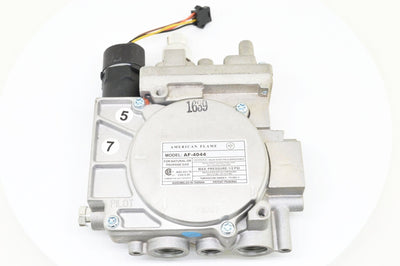Is my wood unit EPA certified
Is my wood unit EPA certified?
Is your wood heating unit up to snuff? Many homeowners and buyers are focused on ensuring their units meet Environmental Protection Agency (EPA) standards. This blog post provides a detailed guide on how to determine if your home's wood unit is EPA-Certified, highlighting the benefits of having an EPA-certified wood heater or stove.
Let's take this journey together towards a greener, safer, and more efficient home!
Key Takeaways
- An EPA - certified wood unit meets strict environmental standards and uses less fuel, producing cleaner air.
- You can check if a wood unit is EPA certified by looking for labels on the unit or searching the database online.
- Using an EPA - certified wood stove helps save money due to improved efficiency and could qualify for tax credits.
- These units provide consistent heat output using renewable resources like cord Wood, corn crib wood, densified firelogs or pellets hence contributing towards sustainable living.
Understanding the EPA and Its Certifications
The Environmental Protection Agency (EPA) plays a crucial role in promoting sustainable living by certifying wood units that meet their rigorous standards. They've established the EPA-Certified Wood Stove Database, providing an easy way to identify these eco-friendly units.
The database is comprehensive, featuring models designed for both room heating and central heating.
Navigating through the EPA’s database can be done using various criteria such as certified fuel type, BTU range, emission rate, efficiency, and firebox volume. Certified fuel types comprise biomass or coal along with cord wood and even densified firelogs.
Queries on this platform yield a list of diverse models from many manufacturers including well-known brands like Vermont Castings. This interactable tool also highlights particular stoves recognized as highly efficient and cleaner alternatives.
Choices aren't limited when it comes to stove types either; the database consists of catalytic stoves, hybrid non-catalytic stoves and standard non-catalytic variants too. All these categories ensure that consumers have a variety of options to suit their unique needs while contributing positively towards the environment by selecting an EPA-certified unit.
What is an EPA-Certified Wood Unit?
An EPA-Certified Wood Unit refers to a wood-burning stove that meets the standards set by the Environmental Protection Agency (EPA). The EPA has stringent regulations to ensure these units emit less smoke and pollutants, promoting cleaner air.
These certified units range from traditional-style stoves made of cast iron or steel to modern-style pellet stoves.
There are several types of EPA-certified wood units listed in the database such as catalytic stoves, hybrid non-catalytic stoves, and more. Well-known manufacturers like Jotul, Vermont Castings, and Blaze King produce these certified appliances.
The fuel used for these units includes biomass fuels like cord wood, coal, densified firelogs among others.
It's important to note that an EPA certification not only ensures environmental sustainability but also contributes towards cost savings due to improved efficiency. With less particulate matter being released into the air through emissions testing compliance with EPA’s database standards for parameters like emission rate and efficiency on HHV percent basis is assured.
How to Determine if Your Wood Unit is EPA-Certified
Establishing if your wood unit is EPA-certified can involve a quick, step-by-step process:
- Start by checking for any visible labels or badges on your wood unit. Most manufacturers of EPA-certified models attach a label on their products.
- Look specifically for the EPA-certified labels or EPA-qualified labels; these are distinct indications that the wood unit meets EPA standards.
- If you don't find any labels, find out the manufacturer and model of your wood stove. You'll often find this information in the manual or imprinted on the stove itself.
- Use this model information to search the EPA - Certified Woodstove Database online. This database includes all stoves that meet EPA certification standards.
- In the database, look up specific criteria like emission rate, efficiency/HHV (percent), and test method type to get more details about your specific wood unit's performance and sustainability.
- For further assurance or in case of doubts, reach out directly to the manufacturer for confirmation or send an email query to woodheaterreports@epa.gov.
Benefits of an EPA-Certified Wood Unit
Enjoy a sustainable and safe lifestyle with an EPA-Certified Wood Unit that offers improved energy efficiency, potential cost savings, and consistent heat output. The usage of certified fuel types such as biomass or cord wood in these units displays commitment to environmental responsibility.
An EPA-certified unit not only meets strict emissions standards but also ensures your home stays warm effectively and efficiently, thus contributing to a greener future.
Sustainable Living
Choosing an EPA-certified wood unit is a significant stride toward sustainable living. These efficient heating units contribute to the conservation of our environment by reducing harmful carbon emissions dramatically.
They rely on renewable fuel sources, such as biomass materials, bringing you warmth without depleting natural resources. This responsible method of home heating demonstrates personal commitment to environmental stewardship and sustainability, fostering a healthier Earth for future generations.
An important aspect of sustainable living includes minimizing our ecological footprint whenever feasible, with energy-efficient EPA certified wood units being an effective way towards this goal.
Enhanced Safety
Choosing an EPA-certified stove not only contributes to sustainable living but also significantly improves safety in your home. These stoves undergo rigorous efficiency testing for complete combustion, drastically reducing the detrimental creosote buildup common with uncertified models.
This makes them substantially safer, minimizing the risk of fires and ensuring a secure heating experience. The reduced emission rate from these units further enhances the safety factor, emitting just 4.5 grams of smoke per hour as compared to some uncertified models that release up to 30 times more pollutants into your indoor air quality.
Such features make EPA-Certified Wood Units exceptional choices for eco-friendly households prioritizing health and safety alongside sustainability.
Improved Energy Efficiency
EPA-certified wood stoves are champions when it comes to improved energy efficiency. Compared to non-certified models, they use less fuel while providing the same level of heat. This high-efficiency performance is due to advanced design features such as better insulation and combustion technology that ensures complete burning of the wood.
Such robust construction also restricts smoke emission, reducing it from 15-30 grams per hour in uncertified stoves, down to just 4.5 grams in EPA-approved models. Reduced smoke implies less wasted heat, translating into cost savings for homeowners due to lower fuel requirements over time.
Potential Cost Savings
Switching to an EPA-certified wood unit can lead to significant cost savings. These units are designed with high efficiency, letting homeowners get more heat with less fuel. This means you'll spend less money on keeping your home warm during those cold winter months! Moreover, wood and pellet fuels often have steadier prices than gas and oil, making budget planning easier.
An added bonus? Some wood and pellet stoves qualify for a federal biomass tax credit of up to 30% or $2,000 until December 31, 2032. Sleek design meets sustainability in these cost-effective heating solutions!
Consistent Heat Output
One significant advantage of EPA-certified wood stoves is their ability to deliver constant heat. This consistency ensures that your rooms maintain a comfortable temperature without the fluctuations often associated with uncertified models.
With complete combustion, these high-efficiency units sustain steady warmth using biomass fuel such as cord Wood, corn crib wood, densified firelogs or wood pellets. An effectual burn reduces creosote buildup and makes for safer heating.
Providing this consistent heat output leads to not only comfort but also contributes towards sustainable living by optimizing the use of renewable resources optimally while reducing smoke emissions significantly - down from 15-30 grams per hour in non-certified models to just 4.5 grams in an EPA certified stove!
Conclusion
Having an EPA-certified wood unit brings a plethora of benefits, such as improved efficiency and minimized environmental impact. The process to verify if your unit is certified isn't complicated, thanks to the searchable EPA-Certified Wood Stove Database.
This kind of commitment towards sustainable living proves not only beneficial for you but also contributes significantly towards the well-being of our planet.
FAQs
1. What does it mean for a wood unit to be EPA certified?
An EPA-certified wood unit, such as room heaters or fireplace inserts, follow guidelines set by the Office of Air and Radiation for emissions limitation, ensuring clean energy output.
2. How can I tell if my wood-burning appliance is EPA certified?
EPA certification should be displayed on the appliance itself with an EPA label. You can also search your model under "previously" or "currently" EPA Certified lists - based on 1988 and 2015 rules against the recent 2020 rule.
3. Do different types of fuel affect whether my stove is EPA certified?
Yes! Your stove burning biomass coal versus natural gas affects this status because each fuel type must meet specific emission standards cited in ASTM protocols like E2779-10, E2515-11 or E871-82.
4. Can large stoves or fireplaces insert still be considered efficient under current regulation?
Absolutely! The size including firebox volumes doesn't determine efficiency / HHV (percent). Instead pay attention to proper maintenance and use correct fuels as advised since both small stove models and large ones can offer sustainable heating benefits when properly used.
5. Are all modern style wood units automatically compliant with new regulations?
Not necessarily! Whether a traditional style masonry heater or a sleek pellet-fueled Quadra-Fire model, compliance comes from passing proper testing methods such as CSA B415.1-10 Alternate Test Method not just being modern in design.
6. What about safety considerations alongside these standards?
Health safety remains paramount; so ensuring carbon monoxide emissions are within acceptable levels preventing any adverse health effects due to potential exposure is part of abiding by these standards too.
← Older Post Newer Post →




























